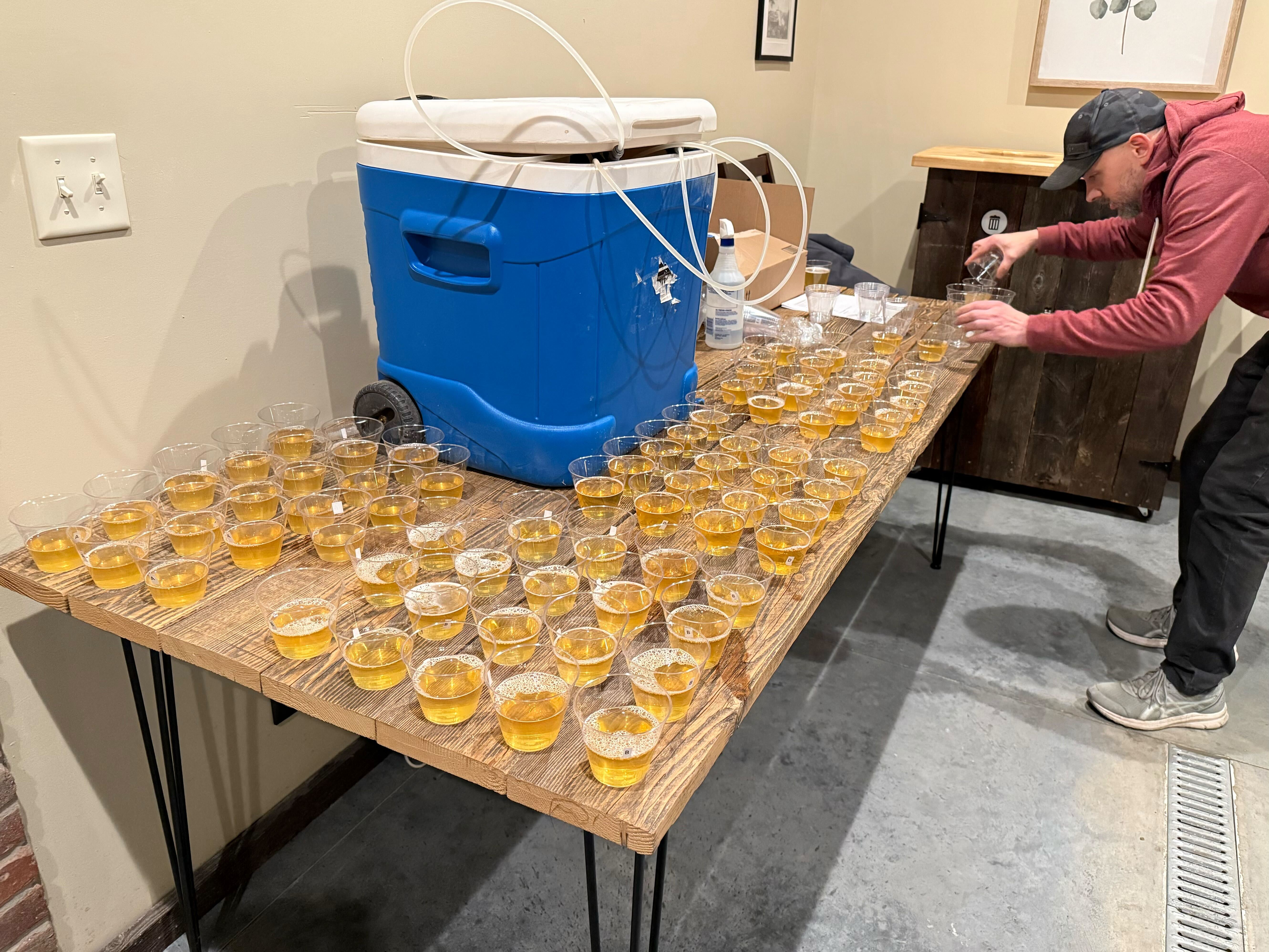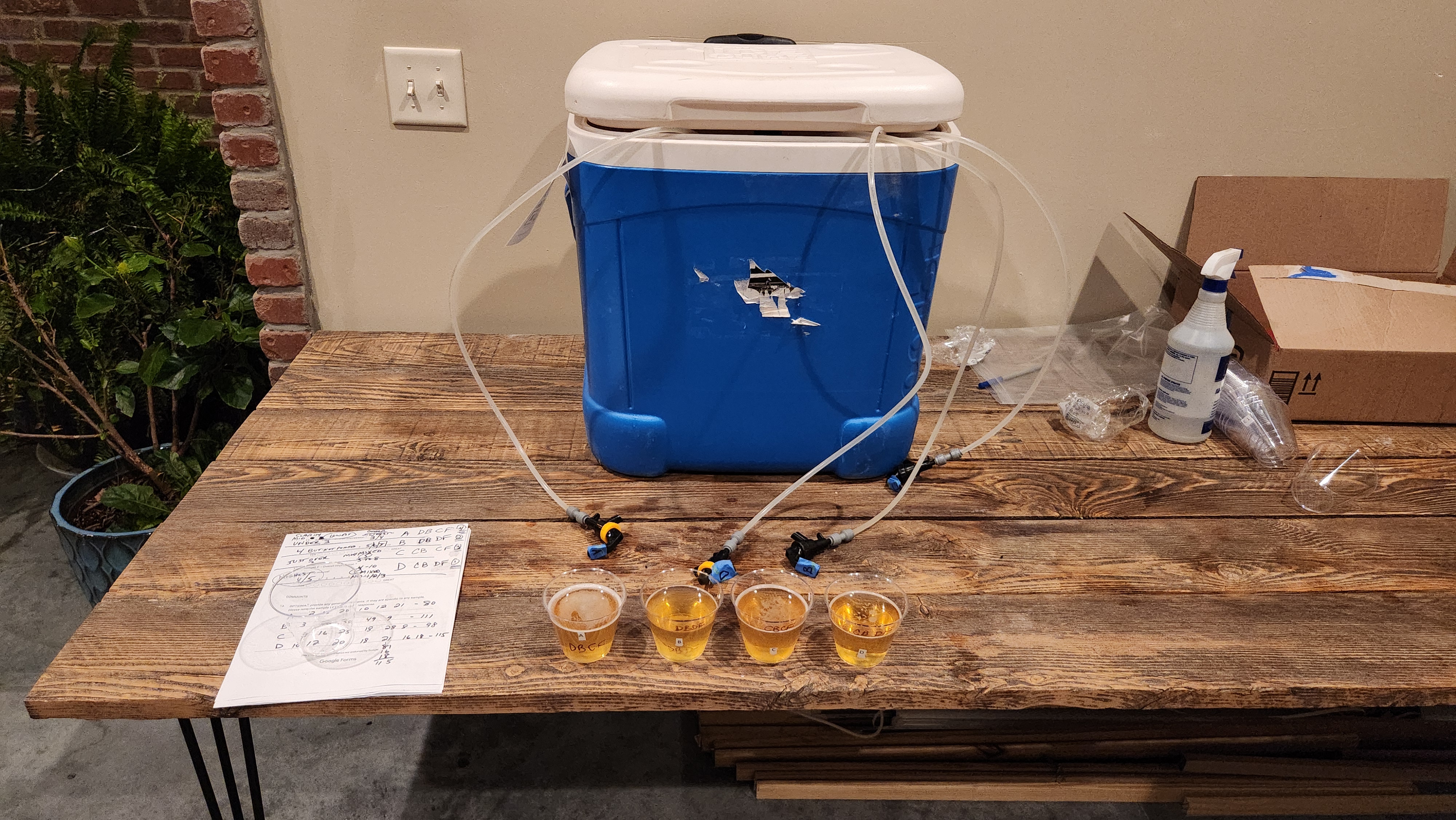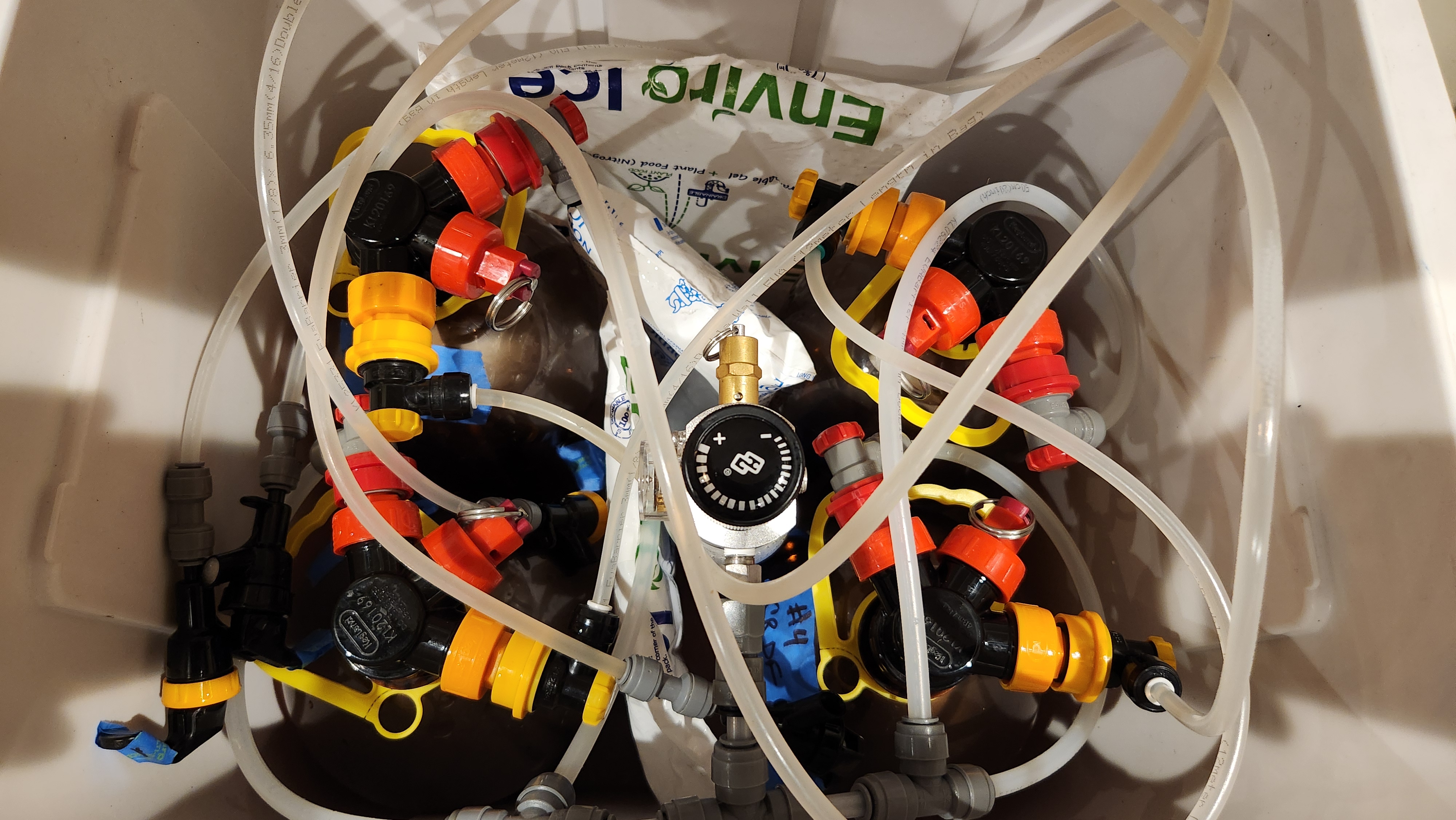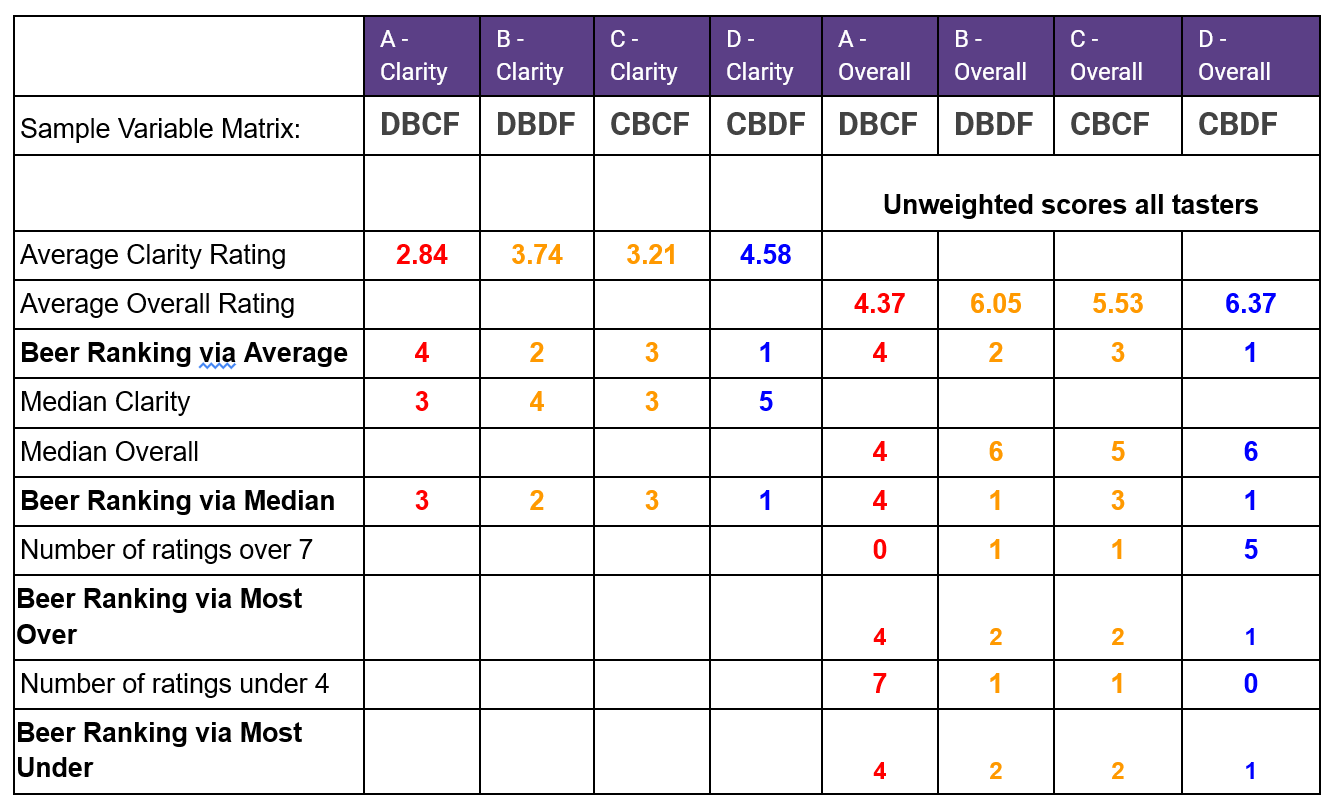The tasting happened last night and 19 tasters provided ratings via Google forms so I can manipulate the data relatively easily rather than trying to read handwriting. I'm compiling the responses into more digestible data and will report back soon enough but I just wanted to tease that there were significant differences in the beers in both clarity and flavor.
I did pour a 5th cup "E" that was randomly selected from the four actual variable samples that I used to test for sensory reliability. If a taster rated the duplicate the same as its mate, they get their response slightly amplified. BJCP judges get a rating boost based on their rank as well. I'll show raw and weighted results.



I did pour a 5th cup "E" that was randomly selected from the four actual variable samples that I used to test for sensory reliability. If a taster rated the duplicate the same as its mate, they get their response slightly amplified. BJCP judges get a rating boost based on their rank as well. I'll show raw and weighted results.


















![Craft A Brew - Safale S-04 Dry Yeast - Fermentis - English Ale Dry Yeast - For English and American Ales and Hard Apple Ciders - Ingredients for Home Brewing - Beer Making Supplies - [1 Pack]](https://m.media-amazon.com/images/I/41fVGNh6JfL._SL500_.jpg)












































